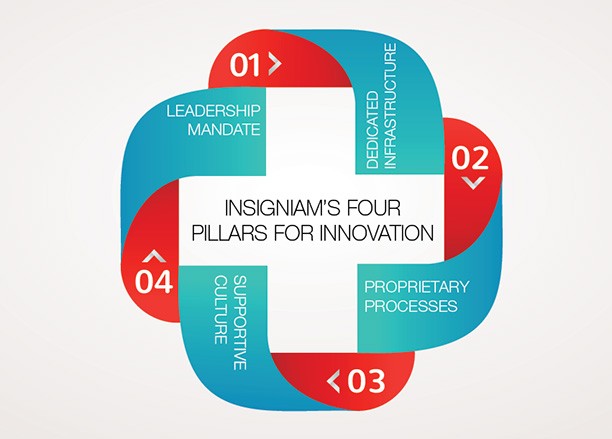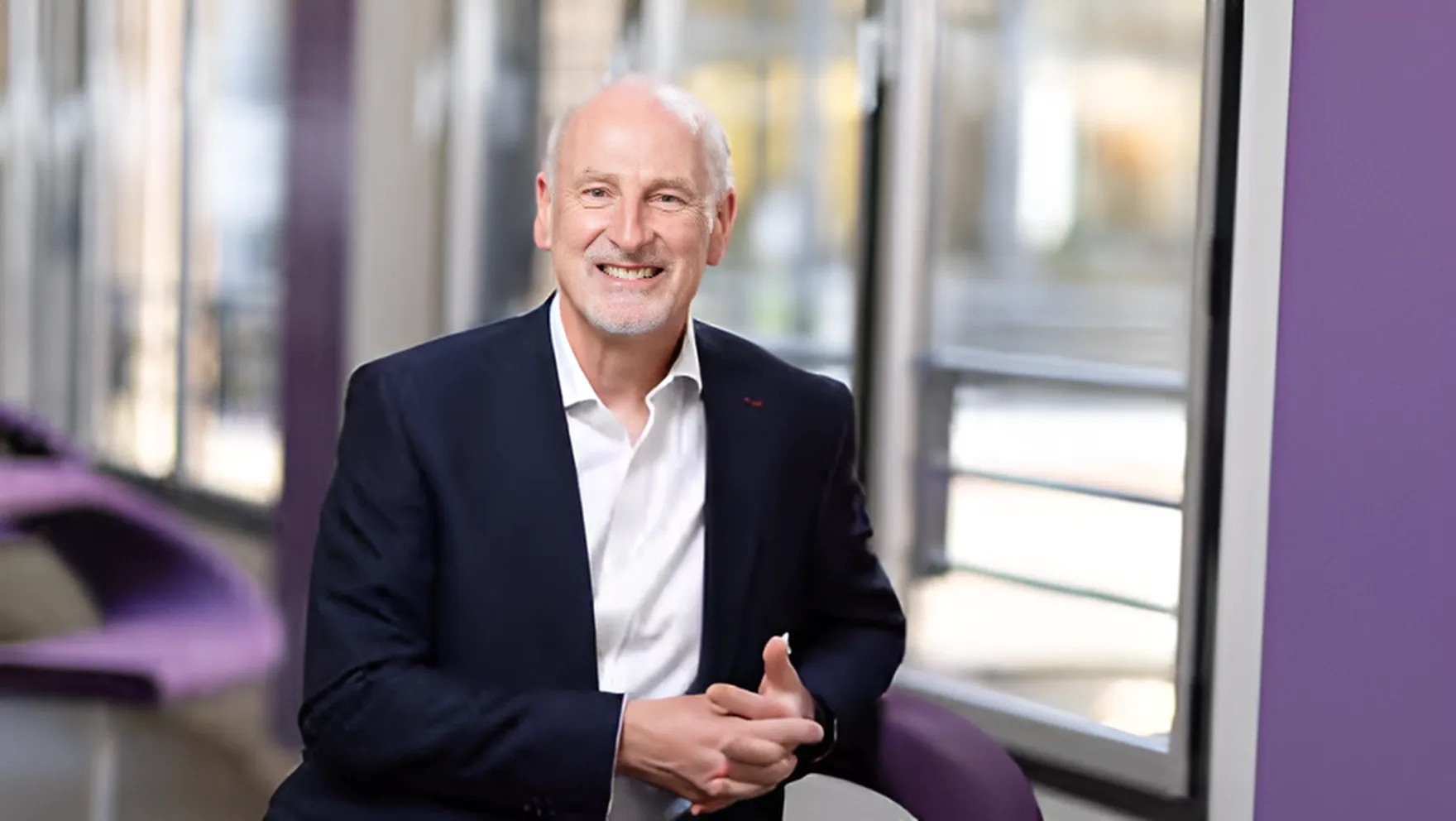Healthcare Leaders, Our Time Is Now to Transform Healthcare
With so many dramatic shifts happening across the healthcare landscape, now is the time for innovation. Now is the time to transform healthcare. Business as usual will no longer suffice, whether it’s coping with an aging population fraught with noncommunicable diseases or shifting to a focus on wellness.
“This is our moment in time to transform healthcare,” says Nathan Owen Rosenberg, Insigniam founding partner. “It is time for healthcare leaders to define and realize a new, bold future for the care and health of our population.” Globally, a host of forward-thinking organizations already have read the tea leaves, actively innovating demonstrations into what global healthcare will look like in the future. (Tweet this!): At the Mayo Clinic, for instance, approximately 65 people are actively dedicated to identifying and testing new ideas, using human- centered design methods.
“Our approach is to transform the way people experience healthcare,” explains Douglas L. Wood, M.D., who is the director of the Center of Innovation at Mayo Clinic. Emphasizing that “we are fundamentally interested in putting the needs of people first,” he references research that identifies key reasons why people often don’t seek care due to barriers created by providers and the system.
“We listen to people’s needs, and we often try to force them into care, blaming them if they are noncompliant. People also spend most of their time out of clinics; we need to develop and deliver care where they are, instead of forcing them to go to clinics where they may not feel comfortable.”
Dr. Wood adds that “we have lots of roles for sickness care, but not a lot for health. Our systems force protocols on people that are rigid and not very helpful.”
Types of innovation projects coming out of Mayo’s Center for Innovation range from changing the delivery of care for expectant mothers –– even equipping them with Doppler ultra sound machines so they can listen to their babies — to creating a laboratory in an assisted-living facility to manage transitions from hospital to home settings, and even embedding “designers” into the campus environment at Arizona State University who are studying ways to mitigate the stresses of campus life.
Similarly, integrated care consortium, Kaiser Permanete, operates its “Hospital of the Future” project, creating scale models of an integrated system linking doctors and clinics, as well as a health insurance component, all housed inside its 37,000-square-foot Garfield Innovation Center in San Leandro, California.
Cross the ocean to China and there’s the “Innovation City” on the outskirts of Wuhan, the country’s newest symbol of the government’s mandate for innovation. Complete with two dozen structures, it was no more than rolling farmland just two years ago.
The European Union has also embraced the concept of innovation, establishing the “Innovation Union – A European 2020 Initiative.” One of its goals is to create a single European research area to attract science and technology talent and funding as a means to compete with U.S. and Asian markets.
In Switzerland, heavy emphasis also is being placed on innovating business processes, with a new hospital financing system, launched in 2012, addressing access to capital and encouraging competition and consolidation. This program is focused not only on efficiency, but also on care and quality.
CREATE VALUE
At the end of the day, “Innovation is about delivering new value,” says Jennifer Zimmer, Insigniam partner, noting that there are “huge challenges in the delivery of services.”
Indeed, says Bina, who believes the only way to survive in today’s volatile environment is to innovate with a focus on accountability. The simple truth, she says, is that patients, as they become more accountable for their care, “are going to be shopping,” which creates a new layer of competition.
Robert E. Johnston, Insigniam consultant and co-author with J. Douglas Bate of The Power of Strategy Innovation, agrees. Since publishing in 2003, he says he has observed global healthcare innovation mature to a place outside of research and development.
“We are now moving from ad hoc to breakthrough, quantum innovation,” he explains. “That is the new high bar.” To innovate effectively requires a very deliberate and organized effort, he explains, with Insigniam’s approach based on four pillars for innovation:
- Leadership mandate
- Dedicated infrastructure
- Proprietary processes
- Supportive culture

“First, the C-Suite must send a very loud and clear mandate for innovation across the enterprise that is relevant to all employees,” Johnston says. “They also must give the necessary permission to do fresh thinking, and they must back this up with funding, people, time, and space.”
Johnston says that the creation of innovation labs on the scale of Mayo and Kaiser Permamente is becoming an increasingly common phenomenon; however, it is possible to scale up in a less grandiose way.
“One way to jump start embedded innovation in the DNA of an organization is to commit to a yearlong innovation immersion,” he explains. “Once you have a vision for your future organization, you plan backwards. This way you eliminate all the noise that over time becomes irrelevant.”
The metaphor he says he uses the most these days is that “every organization is on its own innovation journey. You have to get from point A to point B.”
Working with an organization in South Africa, Johnston describes an innovation immersion experience that began with two executive teams. In short order, they chartered 26 additional innovation, or I-Teams, to address both tactical and strategic issues.
After the initial launch, a mid-year “jam” session” was help and the energy and enthusiasm level was “palatable,” he says. By the end of the year, which wrapped up with a celebration, many of the teams had completed their work, resulting in pipelines of new business opportunities and significant cost-saving opportunities.
For this company, what began as a one-year effort is now in the 10th year of its journey.
While attending a recent conference hosted by the Massachusetts Institute of Technology (MIT), Johnston recalls watching “Hack-a-Thons,” which involve participants “hacking their way through how clinical trials are conducted today.”
“It’s difficult to enroll patients and even tougher to keep them in the program,” says Johnston. “The idea was to attract and keep patients in for the long haul by offering them, up front, free drug therapy, pending approval by the Food and Drug Administration (FDA).”
MIT has staged 10 of its “Hack-a-Thons” around the world in hospital organizations, and out of these have come 10 new ventures that are receiving third-party funding.
BEWARE THE BARRIERS TO TRANSFORM HEALTHCARE
However, while innovation can breathe new life into an organization, there are barriers that can derail even the best efforts.
Zimmer says executives should also be aware of their “corporate immune system,” which repels ideas because “that wouldn’t happen here” and “senior management will never go for that.” Equally debilitating is corporate myopia, where organizations “have a very narrow lens for how they define business,” and corporate gravity, which holds down organizations that operate under a “can’t-do mindset.”
Ultimately, innovation is only as good as its execution. Insigniam conducted an Executive Sentiment survey in 2013, asking 200 executives how prepared they are to innovate and execute on their innovation ideas. An overwhelming 87 percent said innovation is the most important or a very important factor in their organizations’ ability to succeed and strengthen their competitive advantage in the next 12 to 13 months. However, only 15 percent felt their organizations were well prepared to generate the needed level of innovation.
“Many of today’s health leaders are in shock by all the changes facing healthcare,” Johnston says. “They are catatonic. I’ve heard leaders say ‘When we look into the future, we don’t know what is going to happen. It is like we’re walking into a dark room.’
“Well, at some point, the lights are going to come on. The organizations that are most prepared to handle the opportunities will win … and the others will be left behind.”
He adds that while it is entirely impossible to predict what the future will hold, “you don’t want to be surprised by it either. You can’t predict, but you can influence,” which is what innovation at its core is all about.



